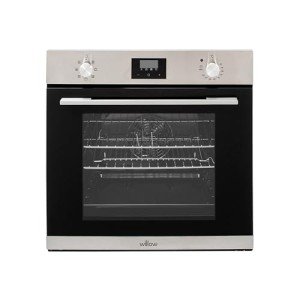5 Clarifications On Built In Electric Oven
The Comprehensive Guide to Built-in Electric Ovens and Hobs
In today's fast-paced world, modern kitchen appliances have developed drastically to deal with the tastes and requirements of contemporary house owners. Among these appliances, built-in electric ovens and hobs stand out for their effectiveness, design, and performance. double oven built hob explores the features, advantages, setup pointers, and maintenance of built-in electric ovens and hobs, along with resolving regularly asked questions.
Comprehending Built-in Electric Ovens
What Is a Built-in Electric Oven?
A built-in electric oven is an appliance designed to be set up into a wall or kitchen cabinetry, supplying a seamless, integrated appearance in the kitchen. Unlike freestanding ovens, built-in models conserve space and typically come geared up with additional features such as self-cleaning cycles, convection cooking, and various cooking modes.
Kinds Of Built-in Electric Ovens
- Single Ovens: Ideal for smaller sized kitchens or those who cook for fewer individuals.
- Double Ovens: Offer more cooking area, suitable for larger families or those who amuse often.
- Mix Ovens: These consist of both a traditional oven and a microwave, supplying flexible cooking choices.
Benefits of Built-in Electric Ovens
Benefit
Description
Space-Saving Design
Fits flawlessly into kitchen cabinetry, maximizing counter space.
Improved Aesthetics
Produces a modern, professional kitchen appearance.
Versatile Cooking Options
Often features multiple cooking modes consisting of bake, broil, and convection.
Energy Efficient
Consumes less energy than conventional ovens.
Understanding Built-in Hobs
What Is a Built-in Hob?
A built-in hob is a cooking surface area set up into the kitchen countertop, incorporating perfectly with the kitchen design. Offered in electric, induction, and gas ranges, electric hobs are renowned for their accuracy and ease of usage.
Types of Built-in Hobs
- Electric Hobs: Traditional coil components that heat by means of electrical resistance.
- Induction Hobs: Use magnetic energy to heat just the cookware, making them much faster and more secure.
- Ceramic Hobs: Feature a smooth surface with convected heat below, providing easy cleaning.
Benefits of Built-in Hobs
Advantage
Description
Fast Cooking Times
Electric hobs heat rapidly, decreasing general cooking time.
Easy to Clean
Flat surface enables fast and uncomplicated cleaning.
Resilient
Generally built to last and stand up to heats.
Versatile Compatibility
Functions well with different pots and pans products.
Installation Considerations
Installing a built-in electric oven and hob requires mindful preparation.
Steps for Installation
- Step the Space: Ensure the dimensions of the oven and hob match the designated space in your kitchen.
- Examine Electrical Requirements: Consult an electrical expert to make sure electrical wiring can deal with the home appliance's power requirements.
- Placement of Appliances: Position the oven at a practical height, typically between waist and eye level.
- Ventilation: Ensure proper ventilation, specifically if your oven includes a range hood.
Important Tools
- Power drill
- Screwdrivers
- Level
- Determining tape
Security Precautions
- Constantly detach the power before installation.
- Follow maker instructions carefully.
- Think about working with a professional for electrical connections.
Upkeep Tips
Maintaining built-in electric ovens and hobs is crucial for durability and efficiency.
Routine Care Routine
- Cleaning the Surface: Use a soft fabric and manufacturer-recommended cleaner.
- Examining Electrical Connections: Check cords and plug for damages regularly.
- Cleaning up Filters: If the oven has a ventilator, clean or change the filters as required.
Troubleshooting Common Issues
Issue
Possible Solution
Oven Won't Heat
Check the power supply and heating element.
Heating Inconsistency
Check the thermostat and oven calibration.
Hob Not Heating
Ensure pots and pans works and examine the power supply.
Frequently Asked Questions
1. How do I pick the ideal size built-in electric oven?
Selecting the right size involves determining your kitchen area and thinking about just how much cooking you usually do. If you amuse often or have a large household, select a double oven.
2. Are built-in electric hobs safe to utilize?
Yes, built-in electric hobs are safe, especially induction hobs which just heat the pots and pans, lowering the danger of burns.
3. Can I set up a built-in oven and hob myself?
While it is possible for experienced DIY enthusiasts, working with an expert is advised, especially for the electrical connections.
4. How often should I clean my built-in oven and hob?
Cleaning must be done regularly after use, with deep cleansing periods depending on cooking frequency – normally every couple of months.
5. Do built-in appliances need unique upkeep?
Built-in appliances need similar upkeep to freestanding designs, but appropriate care should be taken with their surrounding cabinets.
Built-in electric ovens and hobs present a blend of technology and design, using effectiveness and contemporary aesthetic appeals to any kitchen. With proper selection, careful setup, and routine maintenance, these appliances can enhance one's cooking experience for several years. Comprehending the functions, benefits, and care requirements can empower house owners to produce the kitchen of their dreams— effectively and stylishly.
As kitchens continue to progress into main centers of the home, choosing the ideal built-in options plays an essential function in daily cooking creativity and pleasure.
